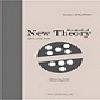Mathematical Model of Tuberculosis with Drug Resistance to the First and Second Line of Treatment
Tuberculosis, Mycobacterium tuberculosis bacteria, Mtb, , developed multi-drug resistant MDR, , Basic reproduction number, Stability,
___
- [1] D. Morse, Brothwell and PJ. Ucko, (1964), Tuberculosis in Ancient Egypt, Am Rev Respir. Dis., 90: 524-541.
- [2] D. Young, J. Stark and D. Kirschner, (2008), System Biology of Persistent Infection: Tuberculosis as a Case Study, Nature Reviews Microbiology, 6: 520-528.
- [3] E. Klein, R. Laxminarayan, D. Smith and C. Gilligan, (2007), Economic incentives and Mathematical Models of Disease, Environment and Development Economics, 12: 707-732.
- [4] H. Waaler, and S. Anderson, (1962), The Use of Mathematical Models in the Study of the Epidemiology of Tuberculosis, American Journal of Public Health, 52: 1002-1013.
- [5] J. Semenza, J. Suk and S. Tsolova, (2010), Social Determinants of Infectious Diseases: A Public Health Priority, Euro Surveil, 15 : 1-3.
- [6] J. Trauer, J. Denholm and E. McBryde, (2014), Construction of a Mathematical Model for Tuberculosis Transmission in Highly Endemic Regions of the Asia-Pacific. Journal of Theoretical Biology, 358 : 74-84.
- [7] K. Zaman, (2010), Tuberculosis: A Global Health Problem. Journal of Health Population and Nutrition, 28: 111-113.
- [8] R. Ullah, G. Zaman , and S. Islam, (2013), Stability Analysis of a General SIR Epidemic Model, VFAST Transaction on Mathematics, 1: 16-20.
- [9] S. Sharma, V.H. Badshah, and V.K. Gupta, (2017), Analysis of a SIRI Epidemic Model with Modified Nonlinear incidence Rate and Latent Period, Asian journal of Mathematics and statistics, 10: 1-12.
- [10] T. M. Daniel, (2006), History of Tuberculosis, Respiratory Medicine, 100: 1862-1870.
- [11] T. Cohen, and M. Murray, (2004) Modelling Epidemics of Multidrug-Resistant m. Tuberculosis of Heterogeneous Fitness. Nature Medicine, 10: 1117-1121.
- Yayın Aralığı: 4
- Başlangıç: 2014
- Yayıncı: Naim Çağman
Muhammad SHAKEEL, Saleem ABDULLAH, Muhammad SHAHZAD
Prabhavati S. Prabhavati S. Mandalageri, Revanasiddappa S. Wali
Raja MARUTHAMUTHU, Seenivasagan NARAYANASAMY, Ravi OTCHANATHEVAR
Arafa NASEF, Abd-el Ftah. Abd Alla. AZZAM, Nada SEYAM
Virendra Kumar GUPTA, Sandeep Kumar TİWARİ, Shivram SHARMA, Lakhan NAGAR
